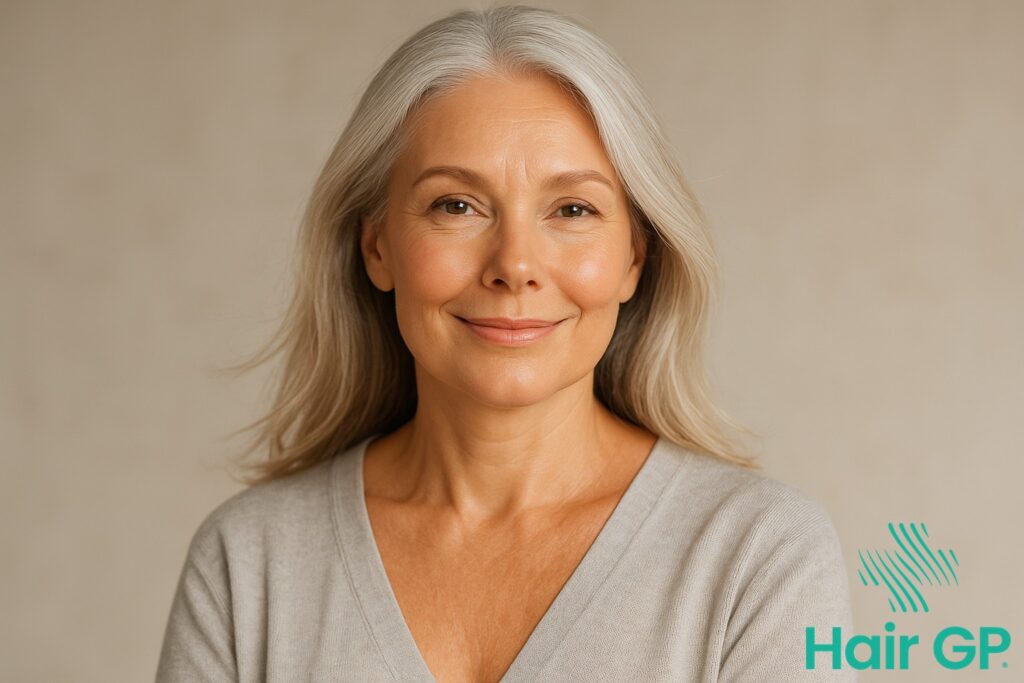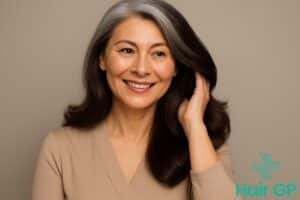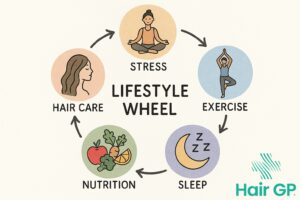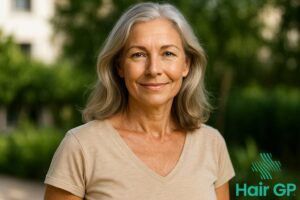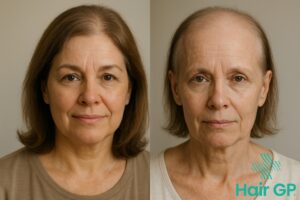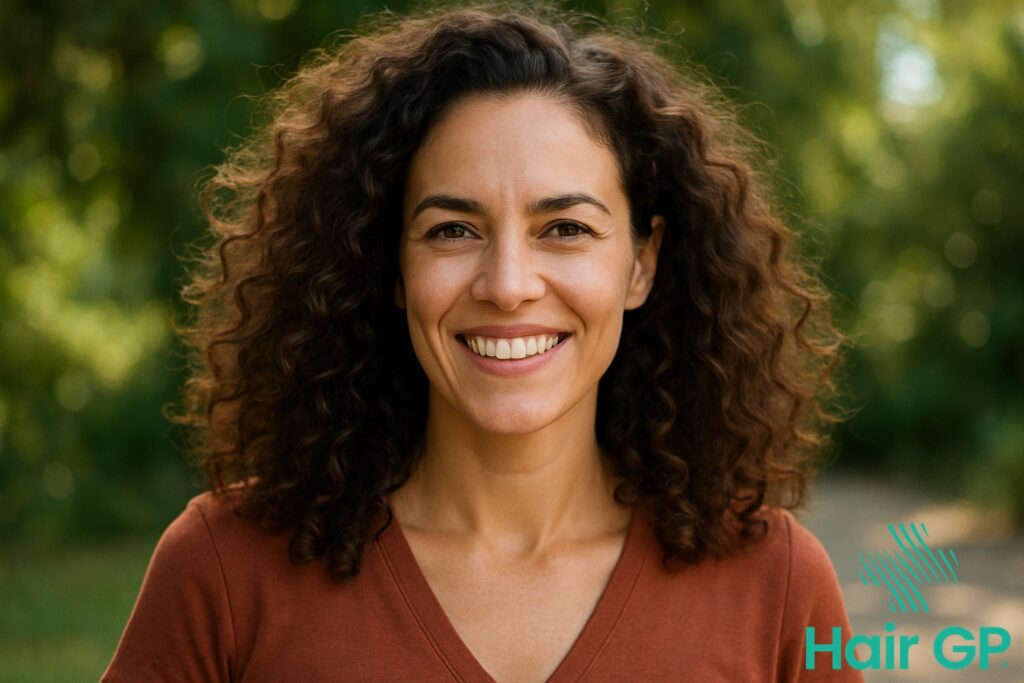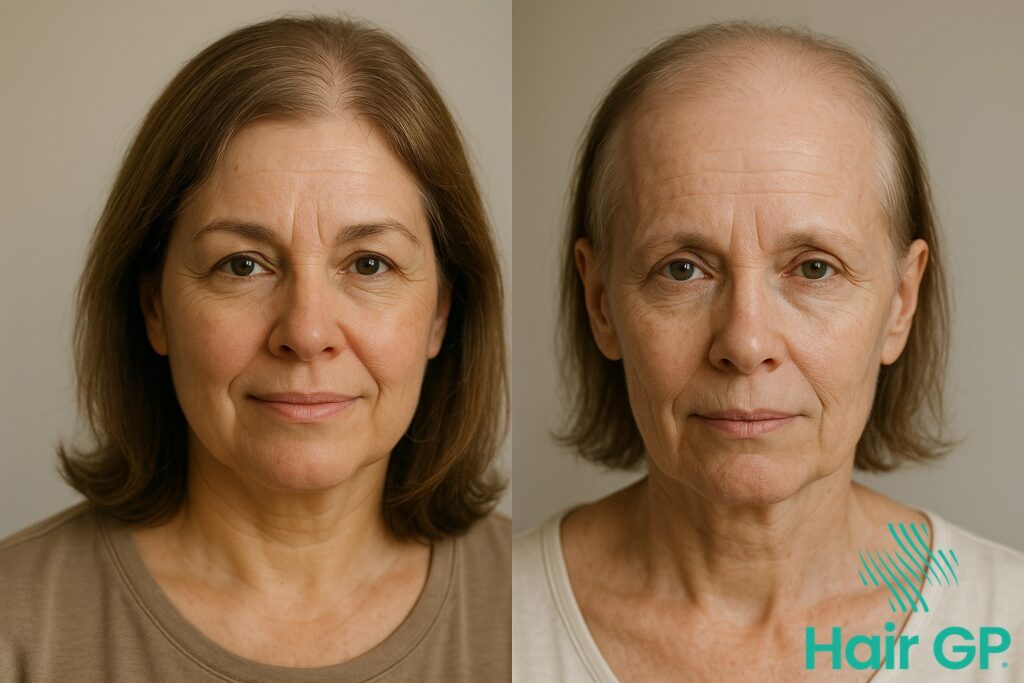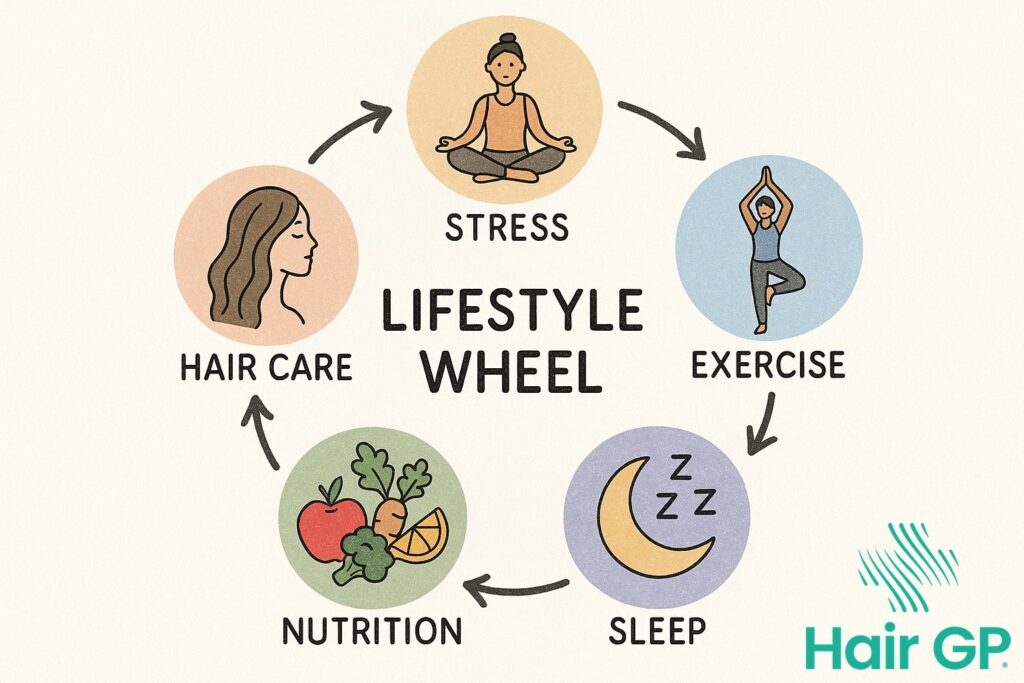Introduction
Hair and skin changes during menopause affect many women, often causing concern and impacting self-confidence. As hormone levels fluctuate throughout perimenopause and into menopause, you may notice your hair becoming thinner, drier, or changing texture, whilst your skin may lose elasticity and develop new concerns. These menopausal symptoms are completely normal responses to declining oestrogen and other hormonal shifts.
This comprehensive guide explores the science behind why these changes occur, helping you understand the connection between hormones and your hair follicles and skin structure. We’ll examine the most common hair transformations, from thinning to texture changes, and skin concerns including dryness and sensitivity. Most importantly, we’ll cover evidence-based treatment options, from medical interventions to cosmetic solutions, and practical lifestyle adjustments that can help you maintain healthy hair and skin throughout this transition. Understanding these changes empowers you to manage them effectively.
Key Takeaways – TL/DR
- Hair loss and thinning affects up to 40% of women during menopause due to declining oestrogen levels
- Skin changes including dryness, wrinkles, and age spots are common menopausal symptoms
- Early intervention with proper treatments can significantly improve hair and skin health
- Hormone replacement therapy (HRT) may help reverse some changes but isn’t suitable for everyone
- A healthy diet and targeted skincare routine are essential for managing symptoms
Why Hair and Skin Change During Menopause
The physical changes to hair and skin during the menopause transition result from complex hormonal shifts that affect cellular function and structure. Understanding these mechanisms helps explain why these changes occur and provides insight into potential management strategies.
The Role of Oestrogen in Hair and Skin Health
Oestrogen plays a crucial protective role in maintaining healthy hair follicles and skin structure. During reproductive years, oestrogen extends the hair growth phase (anagen), keeping hair thick and lustrous [1]. As oestrogen levels drop during menopause, this protective effect diminishes, causing hair follicles to spend less time in the growth phase and more time in the resting phase.
In skin, oestrogen stimulates collagen production and helps maintain moisture retention. The hormonal changes of menopause lead to decreased collagen synthesis by up to 30% in the first five years post-menopause [2], resulting in thinner, less elastic skin. Oestrogen also influences sebum production and skin thickness, explaining why many women experience dryness and sensitivity during this transition.
Other Hormonal Factors
Whilst declining oestrogen receives most attention, other hormones significantly impact hair and skin health during menopause. As oestrogen decreases, the relative influence of androgens increases, potentially causing male-pattern hair thinning in genetically susceptible women. This androgen dominance can also increase facial hair growth whilst scalp hair thins.
Thyroid hormones, which often fluctuate during midlife, directly affect hair growth cycles and skin metabolism. Additionally, declining growth hormone and DHEA levels contribute to reduced skin thickness and delayed wound healing, compounding the visible effects of the menopause transition.
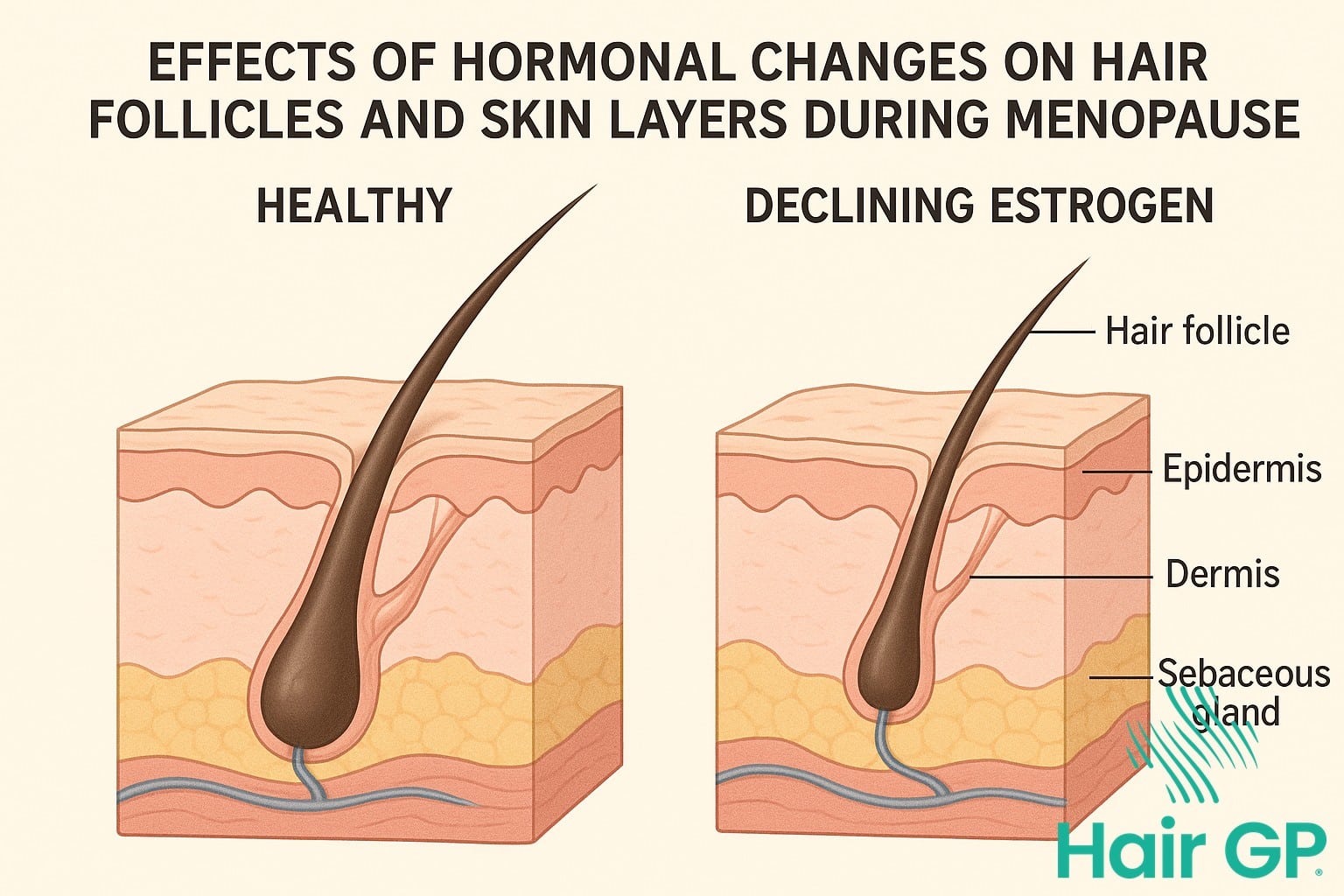
Common Hair Changes During Perimenopause and Menopause
During perimenopause and menopause, hair undergoes significant transformations that can affect both its appearance and health. Women commonly experience various hair-related changes including thinning, texture alterations, and unexpected growth patterns as hormonal fluctuations impact hair follicles throughout the body.
Female Pattern Hair Loss and Thinning
Female pattern hair loss affects up to 40% of women by age 50, with prevalence increasing during menopause [3]. Unlike male pattern baldness, women typically experience diffuse thinning across the crown whilst maintaining their frontal hairline. The widening part becomes increasingly noticeable as overall volume diminishes, creating a see-through appearance at the scalp. This thinning hair pattern, medically termed androgenetic alopecia, results from increased sensitivity to androgens as protective oestrogen levels decline [4]. Many women also report increased hair shedding during washing or brushing, finding more strands on pillows and in shower drains.
Changes in Hair Texture and Quality
Beyond hair loss, menopausal women frequently notice dramatic changes in hair texture. Previously manageable hair may become increasingly dry, coarse, and prone to frizz as sebum production decreases. The hair shaft itself becomes more brittle, leading to increased breakage and split ends. Loss of shine and lustre accompanies these textural changes, as the hair’s protective cuticle layer becomes damaged. Grey hairs often exhibit different texture characteristics, feeling wiry or resistant to styling. These brittle hair concerns require adjustments to hair care routines and product choices.
Unexpected Hair Growth Patterns
Paradoxically, whilst scalp hair thins, many women experience unwanted facial hair growth during menopause. Coarse hairs may appear on the chin, upper lip, or cheeks due to the relative increase in androgen influence. Conversely, body hair often becomes sparser, particularly on arms and legs. This hormonal influence creates an inverse relationship between desired and unwanted hair growth, causing frustration for many women navigating these changes.
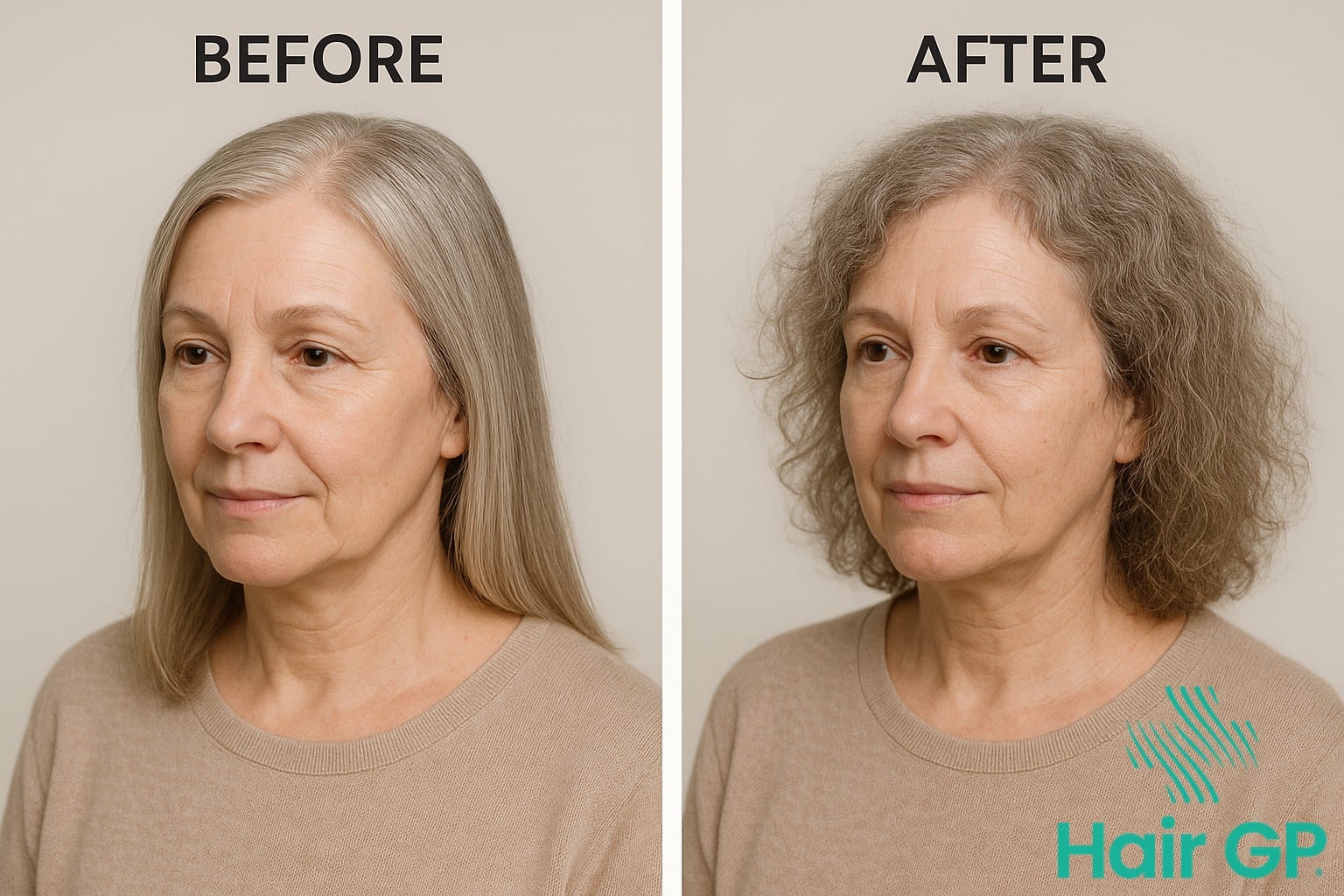
Skin Changes During the Menopause Transition
The menopause transition brings significant skin changes as declining oestrogen levels affect skin structure, moisture retention, and overall appearance. These changes typically begin during perimenopause and progressively worsen as hormone levels continue to drop, affecting skin thickness, elasticity, and barrier function.
Dryness and Itching
Menopausal dry skin occurs when oestrogen depletion compromises the skin’s moisture barrier, reducing its ability to retain hydration. The skin becomes increasingly itchy due to decreased oil production and impaired barrier function, leading to heightened sensitivity and discomfort. Women often require richer moisturisers and gentler cleansing routines to address these hydration needs and maintain skin comfort during this transition.
Wrinkles and Loss of Elasticity
Declining oestrogen causes rapid collagen decline, with studies showing women lose approximately 30% of skin collagen in the first five years after menopause [5]. This dramatic loss, combined with elastin breakdown, results in visible wrinkles and skin sagging. The thinning skin loses its structural support, creating deeper lines and reduced elasticity that characterise ageing skin during menopause.
Pigmentation and Sun Damage
Hormonal fluctuations trigger melanin changes that contribute to age spots and uneven pigmentation. Years of accumulated sun damage become more visible as the skin thins, with research indicating post-menopausal women experience 1.13% annual skin thickness reduction [6]. This thinning makes pigmentation irregularities more prominent, whilst increased sun sensitivity requires vigilant protection to prevent further spot development and skin damage.
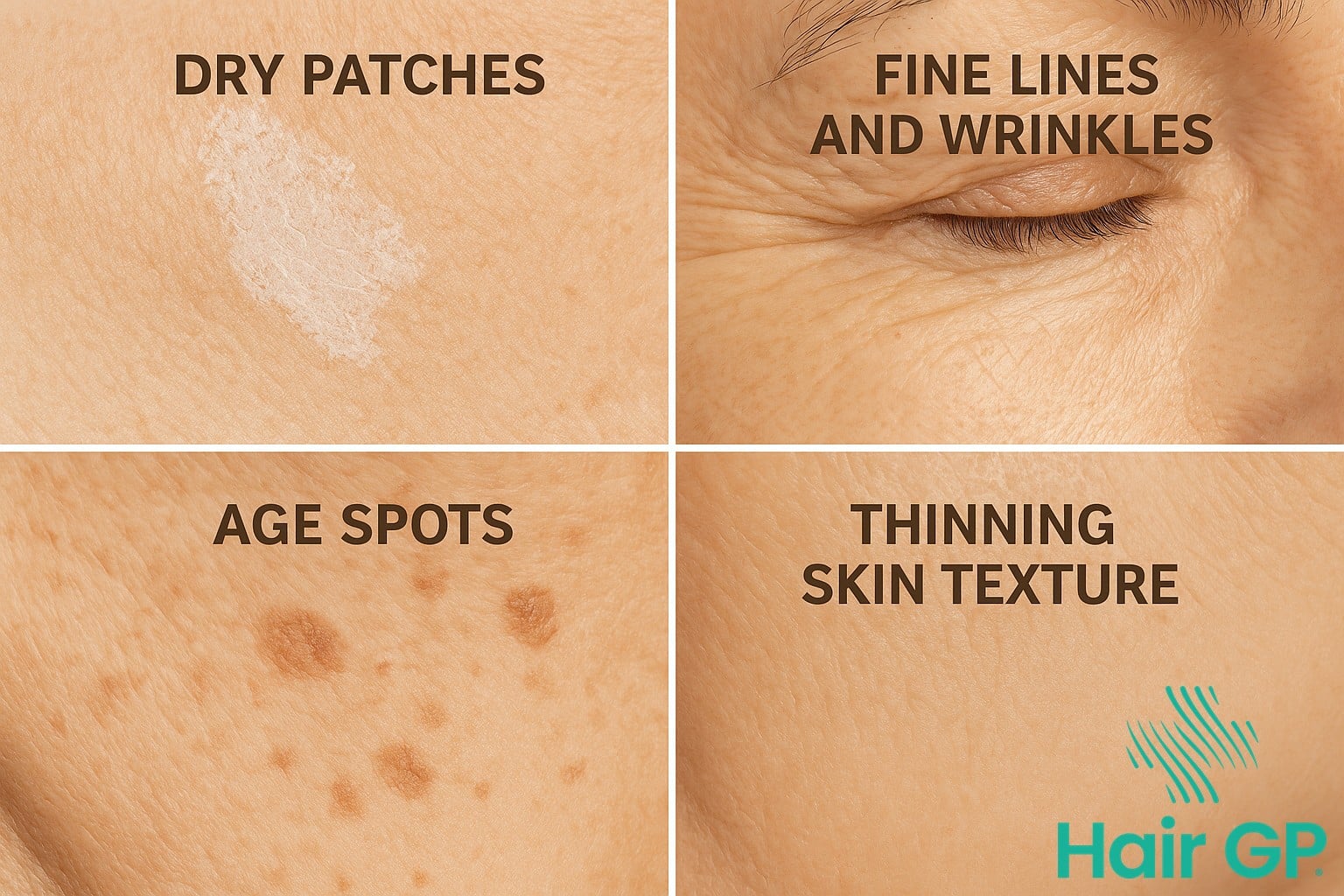
Treatment Options for Hair and Skin Changes
Managing menopausal hair and skin changes requires a comprehensive approach combining medical interventions with targeted cosmetic treatments. Evidence-based treatment options range from hormone replacement therapy to specialised topical solutions, offering women effective strategies to address thinning hair, skin ageing, and related symptoms during this transitional period.
Hormone Replacement Therapy (HRT)
Hormone replacement therapy remains one of the most effective treatment options for menopausal hair and skin concerns. Studies demonstrate that HRT can improve skin thickness by up to 30% within six months of treatment [7]. Oestrogen replacement enhances collagen production, increases skin hydration, and reduces wrinkle depth. For hair health, taking HRT may stabilise the hair growth cycle, reducing excessive shedding and potentially promoting regrowth in some women. However, benefits must be weighed against individual risk factors, necessitating thorough consultation with healthcare providers.
Topical Treatments for Hair Loss
Topical minoxidil represents the gold standard for treating female pattern hair loss during menopause. Clinical trials show that 2% minoxidil solution produces visible hair regrowth in approximately 60% of women after 16 weeks of consistent use [8]. The treatment works by prolonging the anagen phase and increasing hair follicle diameter. Here at Hair GP Dr Amy prefers the 5% foam for Hair loss. Application once daily to affected scalp areas typically yields optimal results. Additional growth stimulants, including caffeine-based serums and peptide treatments, may complement minoxidil therapy.
Skincare Solutions and Procedures
Prescription retinoids remain cornerstone treatments for menopausal skin ageing, stimulating cellular turnover and collagen synthesis. Hydrating ingredients like hyaluronic acid and ceramides help combat dryness and barrier dysfunction. Professional treatments, including chemical peels, microneedling, and laser therapy, offer enhanced results for more pronounced changes, addressing texture, pigmentation, and elasticity concerns effectively.
Lifestyle Changes for Healthier Hair and Skin
Making thoughtful lifestyle changes can significantly improve hair and skin health during menopause. By incorporating proper nutrition, stress management techniques, and establishing effective daily care routines, women can minimise many of the challenging symptoms associated with hormonal changes and support their body’s natural resilience.
Nutrition for Hair and Skin Health
A healthy diet forms the foundation for vibrant hair and skin. Adequate protein intake is crucial, as hair follicles are primarily made of protein, requiring 50-60 grams daily. Omega-3 fatty acids from fatty fish, walnuts, and flaxseeds help maintain skin moisture and scalp health. Essential vitamins and minerals, including vitamin C for collagen production, B-complex vitamins for hair strength, and zinc for tissue repair, should feature prominently in meals.
Hair Care Routines and Products
Adapting your hair care approach can make a substantial difference. Choose gentle cleansing products free from harsh sulphates, washing hair only 2-3 times weekly to preserve natural oils. To tame frizz, apply leave-in conditioners or light serums to damp hair, focusing on mid-lengths to ends. For hair smooth results, use a wide-toothed comb on wet hair and consider weekly deep conditioning treatments to restore moisture and manageability.
Daily Skincare Practices
An effective skincare routine addresses menopausal skin changes comprehensively. Begin with gentle cleansing methods using lukewarm water and cream-based cleansers that won’t strip natural oils. Moisturising tips include applying products whilst skin is slightly damp and choosing formulations with hyaluronic acid or ceramides. Sun protection remains paramount—apply broad-spectrum SPF 30 or higher daily, even on cloudy days, as UV damage accelerates skin ageing and exacerbates existing concerns.
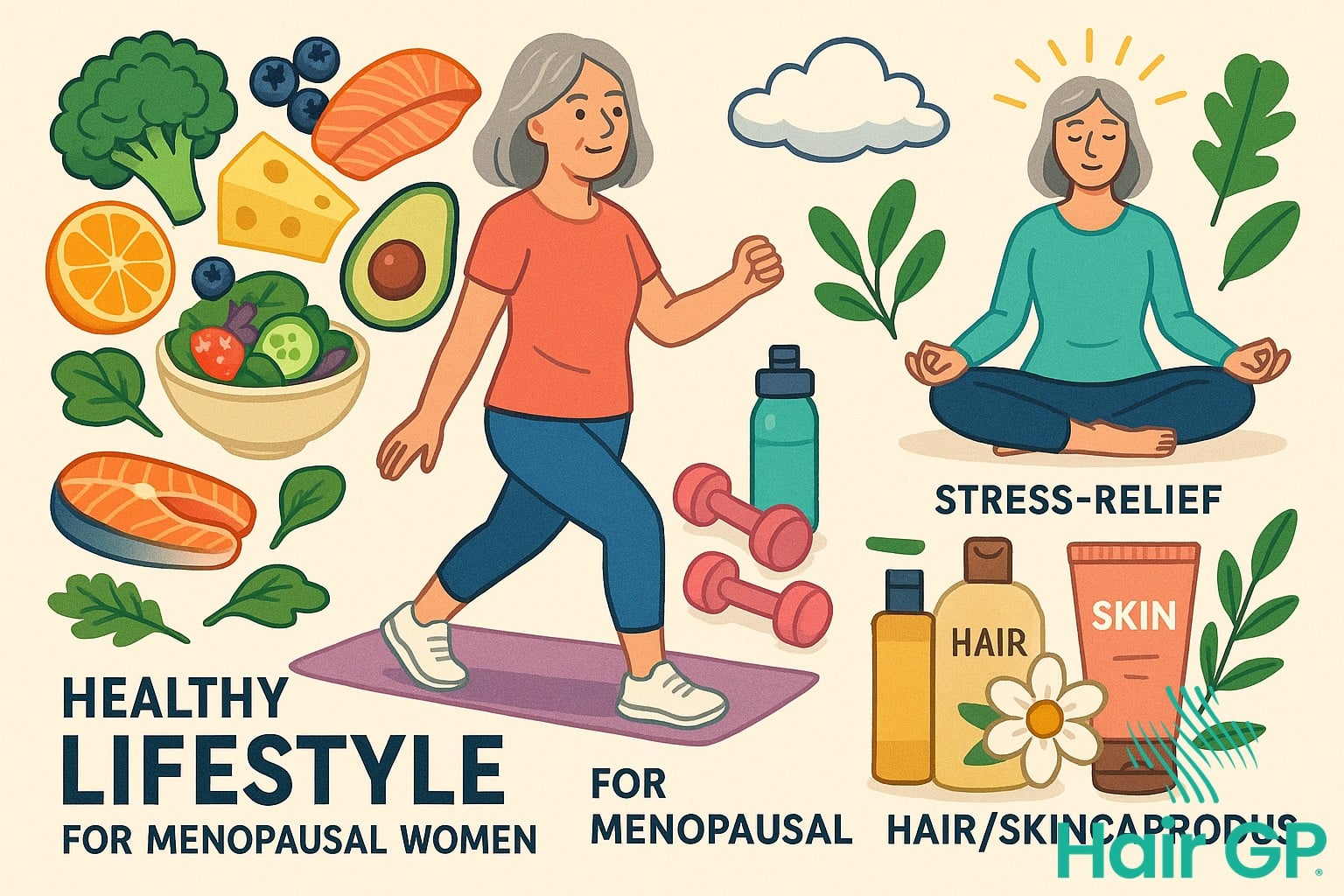
Conclusion
Hair and skin changes during menopause represent a natural part of the ageing process that affects many women worldwide. Understanding that these transformations stem from hormonal fluctuations can provide reassurance and empower women to take proactive steps in managing their symptoms. The journey through perimenopause and menopause need not be marked by distressing hair symptoms or uncomfortable skin conditions.
The range of treatment options available today offers hope and practical solutions for maintaining optimal hair and skin health. From medical interventions such as hormone replacement therapy and topical minoxidil to targeted skincare formulations, women can access evidence-based treatments tailored to their specific needs. Equally important is adopting a healthy lifestyle that supports overall wellbeing through balanced nutrition, regular exercise, stress management, and adequate sleep.
Success in managing menopausal changes often comes from combining multiple approaches. Many women find that integrating medical treatments with lifestyle modifications and proper care routines yields the best results. By working closely with healthcare providers and remaining patient with treatment protocols, women can navigate this transition whilst maintaining confidence in their appearance and overall health throughout the menopausal years and beyond.
Frequently Asked Questions
While some menopausal hair loss can be improved with treatments like topical minoxidil or hormone replacement therapy, complete reversal depends on various factors including the extent of loss and individual response to treatment. Early intervention typically yields better results.
Itchy skin during menopause results from declining oestrogen levels, which reduce the skin’s ability to retain moisture and maintain its protective barrier. This leads to increased dryness and sensitivity, making the skin more prone to irritation.
Hormone replacement therapy can help improve both hair and skin conditions by restoring oestrogen levels. Many women report thicker hair, reduced hair loss, improved skin hydration, and decreased wrinkles when taking HRT, though results vary by individual.
Multivitamins containing iron, zinc, omega-3 fatty acids, and vitamin D supplements may support hair and skin health during menopause. However, it’s important to consult with a healthcare provider before starting any supplement regimen.
References
- Mirmirani P. Hormonal changes in menopause: do they contribute to a ‘midlife hair crisis’ in women? Br J Dermatol. 2011;165(Suppl 3):7-11.
- Lephart ED. Skin aging and oxidative stress: Equol’s anti-aging effects via biochemical and molecular mechanisms. Ageing Res Rev. 2016;31:36-54.
- Mirmirani P. Managing hair loss in midlife women. Maturitas. 2013;74(2):119-22.
- Fabbrocini G, Cantelli M, Masarà A, Annunziata MC, Marasca C, Cacciapuoti S. Female pattern hair loss: A clinical, pathophysiologic, and therapeutic review. Int J Womens Dermatol. 2018;4(4):203-211.
- Brincat M, Moniz CJ, Studd JW, et al. Long-term effects of the menopause and sex hormones on skin thickness. Br J Obstet Gynaecol. 1985;92(3):256-259.
- Affinito P, Palomba S, Sorrentino C, et al. Effects of postmenopausal hypoestrogenism on skin collagen. Maturitas. 1999;33(3):239-247.
- Brincat MP, Baron YM, Galea R. Estrogens and the skin. Climacteric. 2005;8(2):110-123.
- Blume-Peytavi U, Hillmann K, Dietz E, Canfield D, Garcia Bartels N. A randomized, single-blind trial of 5% minoxidil foam once daily versus 2% minoxidil solution twice daily in the treatment of androgenetic alopecia in women. J Am Acad Dermatol. 2011;65(6):1126-1134.

